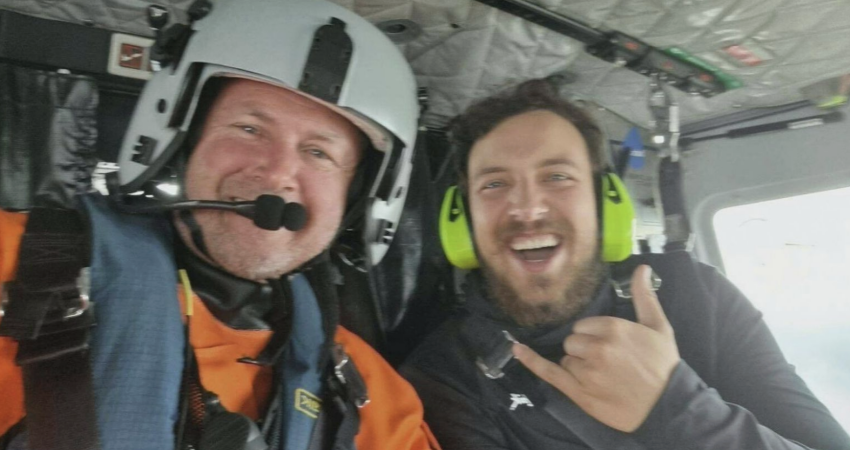Long ago, there was a night when we were racing ahead of a storm, often battling 20-foot seas as we tried to stay outside Nantucket and reach the shelter of Cape Cod. Waves were sweeping the deck of our wooden eastern rig. The mate came out of the doghouse, waited his chance, and went aft to piss over the rail. Just then, a big one crawled up over the port bow. Green water washed the deck clean and buried the leeward rail. I looked out the door and the mate was gone. I was about to scream, "MAN OVERBOARD," when I noticed in the open porthole at the back of the wheelhouse eight white fingers hanging on.
MOBs happen quickly and unexpectedly. Often no one knows you’re gone, as was the case with Montauk lobsterman John Aldridge in 2013. But that was during summertime and in calm seas, and Aldridge survived.
New technology from ACR Electronics in Fort Lauderdale, Fla. can increase the odds of survival. Last year ACR came out with the ResQLink AIS PLB, an AIS capable personal locator beacon that immediately lets nearby boats know where you are.
“It’s designed to fit a life jacket,” said Chris Hoffman director of technology strategy at ACR Electronics. “It transmits at 406 MHz to the Cospas-Sarsat satellites, and then that goes to NOAA and then to the Coast Guard.”
Hoffman noted that the transmissions happen fast, one to two minutes. Numerous satellites carry the Cospas-Sarsat payload. “The GPS Satellites all have it,” he said. “As do the European Galileo satellites and some of the Russian GPS satellites (Glonass).”
But that is standard on PLBs. What the ACR ResQLink AIS also has is an AIS transmitter that can alert nearby vessels of an MOB and the victim’s position. “The ResQLink AIS PLB has a gray activation slider that is attached to the life jacket via an activation tape,” said Hoffman. “When the jacket inflates it pulls the slider and activates the PLB. It can also be activated manually.”
When the ResQLink PLB activates it transmits a VHF signal that can be picked up by vessels with AIS receivers and can be displayed on plotters. “It should set off an alarm depending on the type of plotter,” said Hoffman. “Some of the older ones might just show it on the list of AIS targets.”
While ACR lays claim to being the first company to bring AIS equipped PLBs to market in the U.S., Hoffman noted that other companies are working on similar PLBs. “AIS has been around for years, and the IMO [International Maritime Organization] requires it in EPIRBS [emergency position-indicating radio beacons] on certain types of vessels, and the U.S. Coast Guard supports its use.”
Hoffman added that the ResQLink also has near field communication (NFC). “That means you can download our app and put your phone near the PLB and check the battery and program. As with all Cospas-Sarsat beacons you have to change the program depending on what country you’re in,” he said.
While the ResQLink AIS PLB has been on the market for just over a year, it has not been used in any MOB events involving fishing vessels. But an Australian sailor ran into trouble while circumnavigating his country and used the AIS feature to summon a rescue from a nearby freighter.








